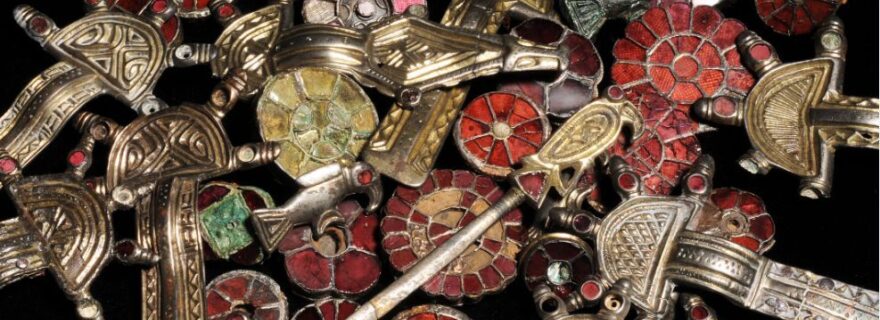The “one percent” of Merovingian Gaul: landed wealth in the will of Remigius of Reims
How rich were the Merovingian “one percent”? The few surviving wills of the period can give us an insight into economic inequality in the Early Middle Ages and the wealth of the richest landowner of them all, the church itself.
In my research on the society and economy of early medieval Francia, I looked for evidence of landownership. Exactly how rich were the rich? In the agricultural economy of the early medieval world, wealth was primarily based on how much land one owned. So, how much land did the early medieval ‘one percent’ own? Unfortunately, there is a dearth of sources on this topic, especially for the early Merovingian period, the late fifth and sixth centuries, and for the north of Gaul, which are the region and time that I study.
One of the few sources available for landownership in northern Gaul in the sixth century is the will of Remigius, bishop of Reims (died c. 533 AD), which enumerates the property he bequeathed to friends, family and his most important benefactor: the church of Reims itself. The will survives in two versions. A short (‘petit’) version, preserved in the ninth-century hagiography of Remigius, written by his successor Hincmar, bishop of Reims. And a long (‘grand’) version of his will, surviving in the tenth-century Historia Remensis Ecclesiae (‘History of the Church of Reims’) written by Flodoard, priest of the church of Reims. Scholars have long debated the contents and authenticity of these two versions, but let me first introduce the main character of this will: Remigius himself.
Remigius of Reims
Remigius, known to the French as St. Rémi, was bishop of Reims in the decades around the year 500. He is most famous for baptising the Merovingian king Clovis, whose adoption of Catholic Christianity was an important milestone in the Christianisation of Europe.
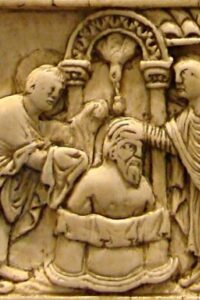
The bishop and the king were well acquainted. Remigius wrote a letter to Clovis, advising him how to be a wise and just ruler. Thus, Remigius proclaims, a good king listens to his advisors, speaks justice, listens to his subjects and liberates slaves:
“You will defer to your bishops and always have recourse to their advice, for if you are on good terms with them your province can fare better.” (transl. Barret and Woodhuysen 2016).
Clearly, Remigius could write with confidence in his episcopal authority. He had all the reason to be a proud bishop, having involved himself in the foundation of several new new bishoprics, at Tournai, Cambrai, Thérouanne and Arras. Descended from a line of local Gallo-Roman landowners, Remigius was a member of a powerful group of local elites who, thanks to their education and connections, were capable of administrating the former Roman province on behalf of the Frankish kings.
His will, then, can give us insight into what kind of wealth a powerful and famous man such as Remigius could have. But it can take us even further back. Since Remigius had inherited much of his property, his will can shed light on how the Gallo-Roman aristocracy had survived the vicissitudes of the fifth century and how they emerged from the chaotic events surrounding the "fall" of the Western Roman Empire.
Wealth and land in Merovingian Gaul
The organisation of landed estates still followed Late Roman practice. Some scholars have speculated that the manorial system, a type of estate organisation with serfs working on the lord’s private demesne, already existed in this period. More probably, this was a later invention of the eighth- and ninth- centuries. Rather, in Late Roman and Merovingian times, landlords leased out parcels to tenants in exchange for rent. Properties could be scattered over a large area, and sometimes even be divided over multiple owners (so that a tenant owed rent to multiple landlords). One of the richest recorded Merovingian landowners is Bertram, bishop of Le Mans. His will, dated to the year 616, mentions about 130 estates scattered all over (what is now) France. Together, they combine to perhaps as much as 300,000 hectares of land, roughly the size of Luxemburg and worth about €7,500,000,000 in modern currency.
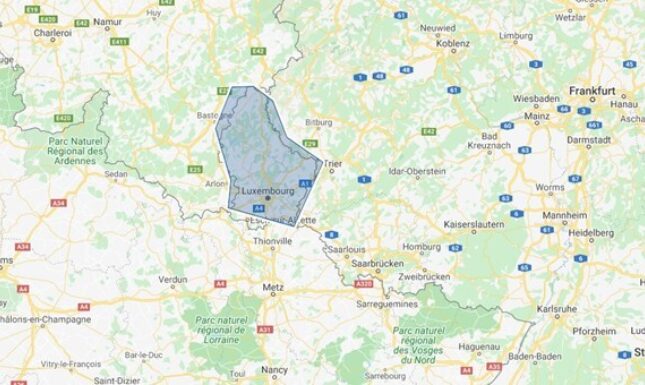
Landed properties could consist of agricultural fields, but also vineyards, orchards, meadows, forests, pastures, water-powered mills, homesteads, saltworks or even monasteries. Oftentimes the land came attached with slaves or serfs (mancipia) who worked the land and paid rent to the landowner. The landlord, meanwhile, could live far away, living a comfortable urban lifestyle in one of the surviving Roman towns. Men like Bertram and Remigius donated much of their land after death to the church, which is how the Catholic church grew to be Europe’s biggest landowner over the course of the sixth- and seventh centuries, owning perhaps as much as one-third of all land.
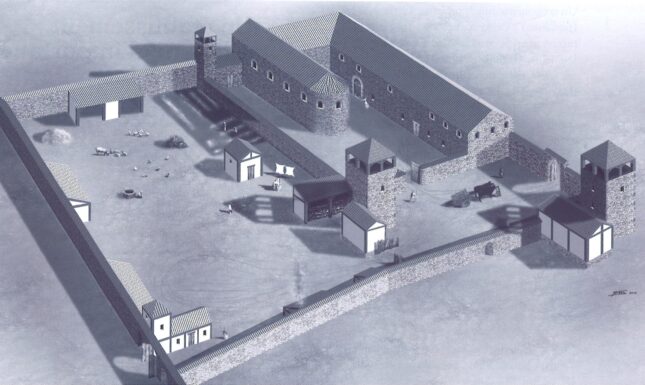
The short will
Compared to the enormous wealth owned by Bertram, Remigius’ property seems to have been a lot more humble. The short version lists only a handful of properties around the city of Reims, some of which were quite small, such as ‘a field at the location of the mills’ in Voncq, or a ‘section of arable fields’ at Cerny-en-Lannois. The short will is rather more preoccupied with the donation of movable items, such as luxurious textiles and precious metals to (ex-)slaves, friends, church staff and family. All in all, Remigius seems to have been a man of middling means. A landowner, but not a particularly rich one.
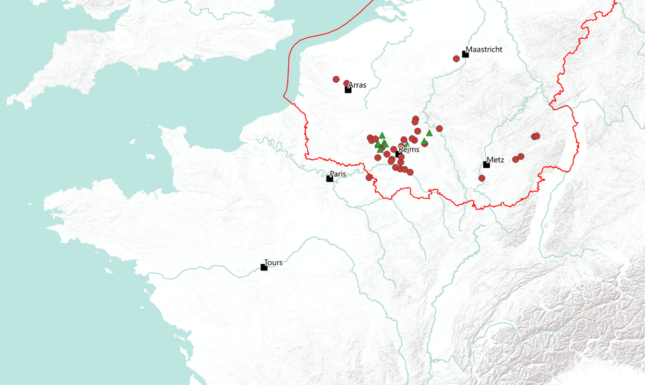

The long will
A very different picture of Remigius’ landed wealth is sketched by the long version of his will. Here, a total of 56 landed properties are listed, not just around Reims, but also around Soissons, Arras, Saarbrücken and in the Provence, Occitania and Aquitaine. Noel Lazaro Delgado has estimated Remigius to have owned a total of about 55,000 hectares in land, worth about €40,000,000 converted to its modern value in euros. Remigius bequeathed most of this land to the church of Reims after his death.
If this version of his will is correct, Remigius appears a lot richer than before, but he is still not as wealthy as the likes of Bertram le Mans. And if €40,000,000 seems like a lot of money, it is still quite moderate compared to the super-rich of our own times. Today’s richest person on the planet, Elon Musk, is worth about €240,000,000,000 (that is, 240 billion euros).
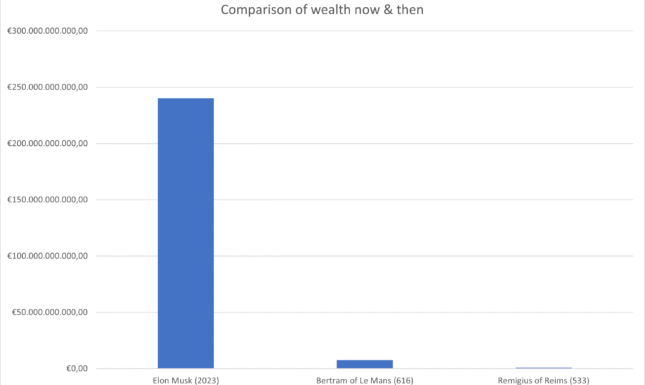
Politics of land
Merovingian wills were not only written in Latin, but continued to operate within the legal framework of Roman law, even if the precise working of the Roman legal system was not always clear anymore to contemporaries. Thus, both the short and the long versions of Remigius’ will are rather flexible in their application of Roman law, which is why some scholars have doubted their authenticity. But a loose application of Roman law fits the Merovingian period, and for this reason the short version of the will is now widely considered as genuine.
The long version, on the other hand, is still considered by most to be a forgery. Many of the estates that Remigius supposedly gifted to the church of Reims in the long version, turn out to have played a role in land disputes not in the sixth century, Remigius’ own time, but in the tenth century, the time Flodoard “copied” the will into his own work.
In the tenth century, the church of Reims was a mighty bishop’s seat that played a key role in West Francia, the future kingdom of France. Reims positioned itself as the sacred centre of the kingdom, the place where the French king was to be crowned by the archbishop of Reims. The archbishop of Reims was, of course, the successor of Remigius, who had crowned Clovis, the first catholic king of the Frankish kingdom, and could thus naturally claim this prestigious position. The will spends much ink on listing which estates were gifted to Remigius by Clovis. This way, the document serves to enunciate the pre-eminent and ancient alliance between the Frankish monarchy and the church of Reims. To give but one example:
‘Along with two villae that Clovis bestowed to me for love of me, after I received him in the baptismal font, namely those that are called in his tongue Piscofesheim’ (l. 72-75, after Delgado’s translation).*
At the same time, the church of Reims was involved in land disputes with secular aristocrats, such as the Count of Vermandois, and in the Vosges with Ragembaldus, vassal of Duke Conrad of Lotharingia. The will of Remigius served to provide the church with a “deep history” of land ownership, allegedly proving that these estates had been in its possession for centuries. Flodoard could use the venerable church archive to bolster his claims, but could also easily stretch the truth somewhat when producing his version of Remigius’ will.
Conclusion
Thus, the long version of the will is most likely a forgery, a false document meant to bolster the tenth-century territorial claims of the church of Reims. This is unfortunate for the historian of the sixth century, because it means the long version is not useful in the study of the sixth century. On the other hand, the document becomes all the more interesting in how it reveals to us how history was (ab)used by later clerics in their political games around land claims and their ambition to make Reims the spiritual, ecclesiastical and ceremonial centre of West Francia in the tenth century.
Finally, if only the short version can be considered as representative of landed wealth in sixth-century northern Gaul, then perhaps landownership was not yet so large scale in the early Merovingian period, allowing ordinary farmers to flourish free from aristocratic landlords (see also our recent podcast episode on the “golden age of the peasant”, in Dutch).
*Note, by the way, a reference to Clovis’ native Germanic language, possibly an ancestor to modern Dutch or Limburgs, contrasted with Remigius’ own Gallo-Romance – Piscofesheim can be roughly translated to “bishop’s home”
Bibliography
Barret, G./ G. Woudhuysen, 2016: Remigius and the 'Important News' of Clovis rewritten, Antiquité Tardive 24, 471-500.
Delgado, N.L., 2008: The grand testamentum of Remigius of Reims: its authenticity, juridical acta and bequeathed property (unpublished PhD dissertation, University of Minnesota).
Jones, A.H./P. Grierson/J.A. Crook, 1957: The authenticity of the “ Testamentum S. Remigii”, Revue belge de philologie et d’histoire 35.2, 356-373.
Roberts, E., 2014: Flodoard, the will of St. Remigius and the see of Reims in the tenth century, Early Medieval Europe 22, 201-230.
Roberts, E., 2019: Flodoard of Rheims and the Writing of History in the Tenth Century, Cambridge, chapter 3: Institutional History and Ecclesiastical Property.
Wood, I.N., 2022: The Christian economy in the Early Medieval West. Towards a temple society, Binghamton/New York.
© Jip Barreveld and Leiden Medievalists Blog, 2023. Unauthorised use and/or duplication of this material without express and written permission from this site’s author and/or owner is strictly prohibited. Excerpts and links may be used, provided that full and clear credit is given to Jip Barreveld and Leiden Medievalists Blog with appropriate and specific direction to the original content.


